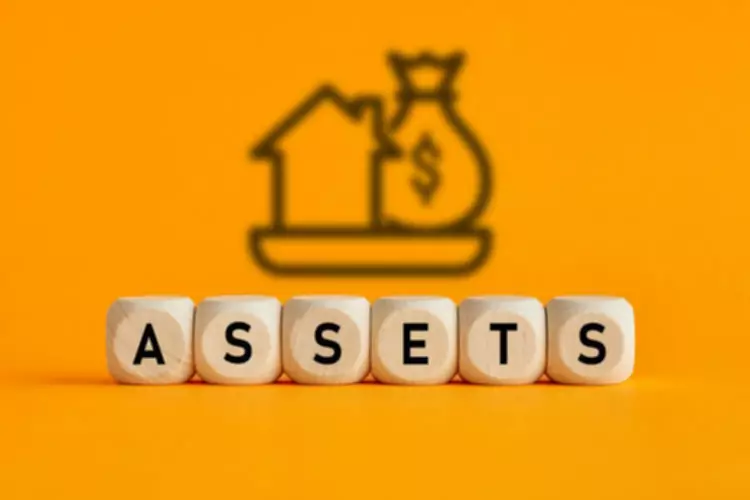Financial Statements for Banks Assets, Leverage, Interest Income
Content

As a bank increases its fee income, it becomes less reliant on the interest income from loans, mitigating interest rate risk . This balancing item is not intended as a measure of equity capital for use in capital adequacy analysis. On a seasonally adjusted basis this item reflects any differences in the seasonal patterns estimated for total assets and total liabilities. With any of the models, though, an integrated management unit is not an investment office aiming to generate revenue by taking on additional risk, as often occurred in the run-up to the global financial crisis of 2007. Its structure and incentives should be designed to optimize and reduce the risk banks take for a given return. Besides setting up a service unit, the bank increases transparency via virtual transfer prices based on market benchmarks, such as tracking the level of cross-selling value.

These include white papers, government data, original reporting, and interviews with industry experts. We also reference original research from other reputable publishers where appropriate.
Balance Sheet Management
Just like accounts receivables and bad debt expense, a company must prepare in the event that borrowers are not able to pay off their loans. These bad pieces of credit are written off in the income statement as a provision for credit loss. Liquidity is usually measured as a company’s ability to pay off debts as they come due, but this does not make sense for a credit institutions as the banking business is illiquid by definition (liabilities coming due and long-term assets). An income statement is one of the three major financial statements that report a company’s financial performance over a specific accounting period. Credit risk is the likelihood that a borrower will default on a loan or lease, causing the bank to lose any potential interest earned as well as the principal that was loaned to the borrower.
Excludes most securities held in trading accounts ; trading account securities at some smaller domestically chartered commercial banks are included in this item. As I pointed out in my first post, the Federal Reserve’s balance sheet has risen by $7.8 trillion since Sept. 10, 2008; during that same period, banks’ assets have increased by $10.2 trillion, while their liabilities rose $8.9 trillion. Despite the similar changes, the composition of banks’ assets and liabilities is not dictated directly by the Fed’s creation of reserves to support its asset purchases. In response to the COVID-19 shock in early 2020, the Federal Reserve aggressively purchased bonds, which increased Federal Reserve balances by $4.62 trillion in the two years through the end of 2021. Meanwhile, commercial banks’ total assets increased by $4.44 trillion and total liabilities increased by $4.36 trillion. The OECD Banking statistics database includes data from 1979 on classification of bank assets and liabilities, income statement and balance sheet and structure of the financial system for OECD countries. The power of central banks was on its fullest display during the pandemic.
WHAT LED TO THE FINANCIAL CRISIS OF 2008–2009?
So Net Income to Common, and then let’s take the average Intangible Common Equity ratio. Now for these returns based metrics, these are mostly going to have Net Income to Common, or Net Income for the Numerator, and then the denominator is going to vary.
- A functional service unit with placement and securitization capabilities acts as an advisor to client-facing divisions.
- However, once investors have a solid understanding of how banks earn revenue and how to analyze what’s driving that revenue, bank financial statements are relatively easy to grasp.
- These include white papers, government data, original reporting, and interviews with industry experts.
- Only then is it possible to see whether words and deeds match, and what reforms are needed.
- Now, almost 15 years later, bank fundamentals have risen to peak levels .
Many banks issue home loans, and charge various handling and processing fees for doing so, but then sell the loans to other banks or financial institutions who collect the loan payments. The market where loans are made to borrowers is called the primaryloan market, while the market in which these loans are bought and sold by financial institutions is the secondary loan market. The sum of the net interest margin plus the commissions for services provided is called core revenue.
Corporate Governance and Remuneration Policy
Includes loans for purchasing new and used passenger cars and other vehicles. Includes direct and indirect consumer automobile loans as well as retail installment sales paper purchased from auto dealers. Includes first and junior liens on closed-end loans secured by 1–4 family residential properties.
Why is a balance sheet important?
The purpose of a balance sheet is to give interested parties an idea of the company's financial position, in addition to displaying what the company owns and owes. It is important that all investors know how to use, analyze and read a balance sheet. A balance sheet may give insight or reason to invest in a stock.
Even when overall growth is not significant, balance-sheet components normally shift in reaction to market, economic, or regulatory changes; with changes in the balance sheet structure bank financial statements also come changes in inherent risks. Over the past 15 years, central banks have been transformed – albeit under some duress given the pre-pandemic passivity of fiscal authorities.
The central bank helps to determine the money supply by controlling the monetary base , aka high-powered money or its monetary liabilities. The central bank, depository institutions of every stripe, borrowers, and depositors all help to determine the money supply. When the bank loans money to a customer, it will reduce excess reserves and increase loans. When a customer pays back a loan, it will increase excess reserves and decrease loans. Excess reserves will also increase when loans are paid back to the bank, securities are sold, physical assets are sold, or any of the liabilities are increased.
So basically without a live view of an exchanges balance sheet there’s high risk. Same obviously goes for banks and hedge funds at large.
— Just B (@just_bdw) November 14, 2022
If the reserve requirement is 10%, and a customer deposits $1000 in their checking account, $100 (10%) will be required reserves and $900 will be excess reserves that can be loaned out. If the money was deposited in a savings account instead, all $1000 would go to excess reserves. That is because there is no reserve requirement on savings deposits. Before it is possible to consider how well this worked, it is necessary to be clear about what policymakers’ various operations were trying to achieve.
The growth of non-bank finance and new monetary policy tools
For example, banks could have raised additional equity capital and extended billions of dollars of new loans, rather than choosing to shift their balance sheets away from loans and toward deposits. While the declining loans-to-assets ratio continues a longer-term trend—albeit, at an accelerated pace—the surge in deposit funding after the financial crisis represents an abrupt and sustained reversal of the long-term trend decline.
This is a form of liquidity re-insurance to financial intermediaries which provide liquidity services to the economy more broadly. Because the central bank has an unlimited capacity to issue money , it is the only institution that can take on this role at short notice; a treasury would have to raise resources, perhaps by borrowing from the central bank.

Dejar un comentario
¿Quieres unirte a la conversación?Siéntete libre de contribuir!